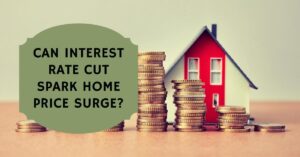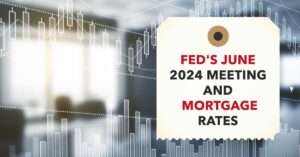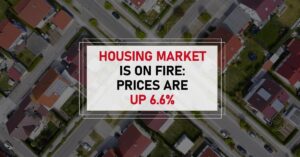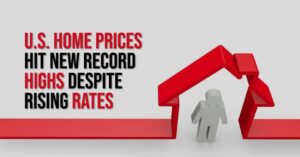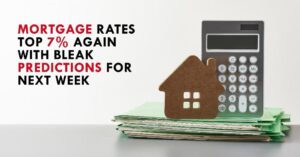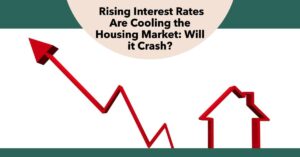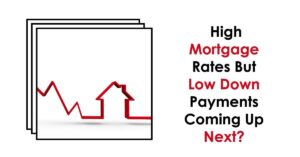For prospective homebuyers, the current housing market presents both opportunities and challenges. With interest rates fluctuating and market dynamics constantly evolving, making the right decision at the right time is crucial. Insights from real estate experts shed light on how an interest rate cut might impact the housing market, potentially leading to a surge in home prices.
Echoing earlier predictions, the Federal Reserve has indeed reduced rates. As of June 6th, 2024, the benchmark 30-year fixed mortgage rate has settled at 6.99%. This represents a modest increase from the 6.79% rate mentioned earlier, but it's still a noteworthy decrease compared to the peak of 7.79% reached in October 2023. The question remains: has this shift in interest rates ignited the surge in home values that some experts anticipated?
The upcoming Federal Reserve meeting on June 18th and 19th, 2024, is a critical event for the housing market. Most financial experts predict the Fed will hold interest rates steady at their current range of 5.25% to 5.5%.
This potential hold on rate cuts has implications for home prices:
- Affordability on Hold: Lower interest rates typically make homes more affordable by reducing monthly mortgage payments. With rates potentially remaining on hold, affordability may not see a significant improvement. Data from the National Association of Home Builders shows a large portion of Americans still struggle to afford the median home price.
- Market Anticipation: The market is likely anticipating the Fed's decision. While some economists predicted cuts in September based on earlier inflation dips, the Fed's caution due to slowing economic growth could dampen consumer confidence.
- Potential Price Impact: A June rate cut is seen as a potential nudge for home prices. Without a cut, significant price increases are unlikely. The market may see continued stability or slight adjustments depending on your specific location.
Will the Dip in Rates Lead to a Surge in Housing Prices?
A More Measured Market Response
The surge in home prices wasn't solely driven by interest rates; it was fueled by a combination of factors, including increased demand and limited supply. However, recent data from the National Association of Realtors (NAR) in May 2024 suggests a potential shift:
- Existing-home sales dipped slightly in April 2024 compared to both the previous month (1.9% decrease) and the same period in 2023 (1.9% decrease). This could indicate a cooling off in the market frenzy. The April 2024 sales figures (seasonally adjusted annual rate of 4.14 million) represent a decrease from both March 2024 and April 2023. This decline occurred across all four major U.S. regions.
- The median existing-home sales price still grew year-over-year in April, reaching a record high of $407,600. However, with inventory levels increasing by 9% from March, the pace of price hikes might moderate.
- Notably, the upper-end market (homes priced $1 million or more) is experiencing a surge in sales (40% increase year-over-year) and inventory (34% increase year-over-year), suggesting buyers in this segment have more options.
- Inventory: The positive news for buyers is the rise in unsold existing homes. April 2024 saw a 9% increase from March and a 16.3% increase year-over-year. This translates to a 3.5-month supply at the current sales pace, offering more breathing room compared to the previous months.
Looking Ahead: A Balancing Act?
While lower interest rates (currently at 6.99% but up from 6.39% a year ago) can incentivize buyers, rising mortgage rates coupled with a gradual rise in housing inventory could create a more balanced market. This could benefit both buyers and sellers by introducing more negotiation opportunities and potentially slowing down the rapid price escalation seen in the past year.
- The housing market is still experiencing year-over-year price growth, but the pace might be moderating.
- Increased inventory levels, particularly in the upper-end market, could offer buyers more choices.
- Interest rates remain a significant factor, but their influence might be less pronounced with a growing supply of homes.
- Broader economic factors beyond interest rates influence the housing market. Overall economic health can significantly impact buyer confidence and their willingness to spend. A strong job market and rising wages can fuel demand and potentially push prices higher. Conversely, economic uncertainty or stagnation can lead to buyer caution and a more stable market.
Beyond Interest Rates: A Look at Additional Factors
It's important to remember that interest rates are just one piece of the puzzle. Here are some other key factors shaping the current housing market:
- First-Time Homebuyer Influence: Millennials are now the largest homebuying demographic, and their preferences can influence market trends. This generation often prioritizes affordability and functionality over square footage, potentially impacting the demand for certain types of properties.
- Geographical Variations: The housing market is not a monolith. While national trends offer a general sense of direction, regional variations can be significant. Certain areas with particularly low inventory or high job growth may see more pronounced price increases compared to others.
- Government Policy and Regulations: Government policies and regulations, such as tax incentives or down payment assistance programs, can also influence housing affordability and buyer activity.
Overall, the dynamics of the housing market are influenced by a multitude of factors, with interest rates playing a pivotal role. While a rate cut may initially seem advantageous for buyers, it could fuel a surge in home prices due to heightened competition and limited inventory.
Here's what to watch for:
- Official Announcement: The Fed typically releases a policy statement a few weeks after the meeting. This will confirm whether rates were held or adjusted. Financial news websites will likely cover the announcement and its impact.
- Market Reaction: Depending on the Fed's decision, the housing market may see a shift in buyer behavior. Monitor local market trends for price adjustments after the meeting. home buying and affordability in your area.
ALSO READ:
- Predictions: Can Porting Your Mortgage Get You a Lower Interest Rate?
- Housing Market Predictions for the Next 2 Years
- Mortgage Rate Predictions: Can Assumable Mortgages Offer Hope in 2024?
- High Interest Rates Predicted But is Zero Down Payment Possible?
- Interest Rate Predictions for Next 2 Years: Expert Forecast
- Interest Rates Predictions for 5 Years: Where Are Rates Headed?
- When is the Next Fed Meeting on Interest Rates in 2024?
- Mortgage Rate Predictions for Next 5 Years
- Mortgage Rate Predictions for the Next 2 Years
- Mortgage Rate Predictions for Next 3 Years: Double Digit Rise
